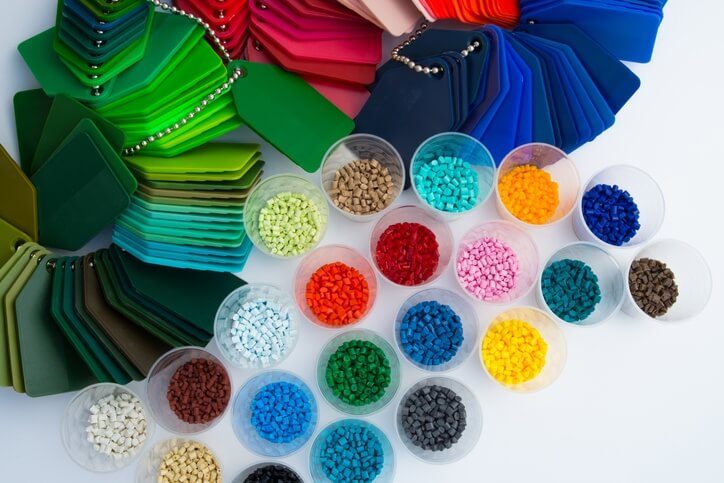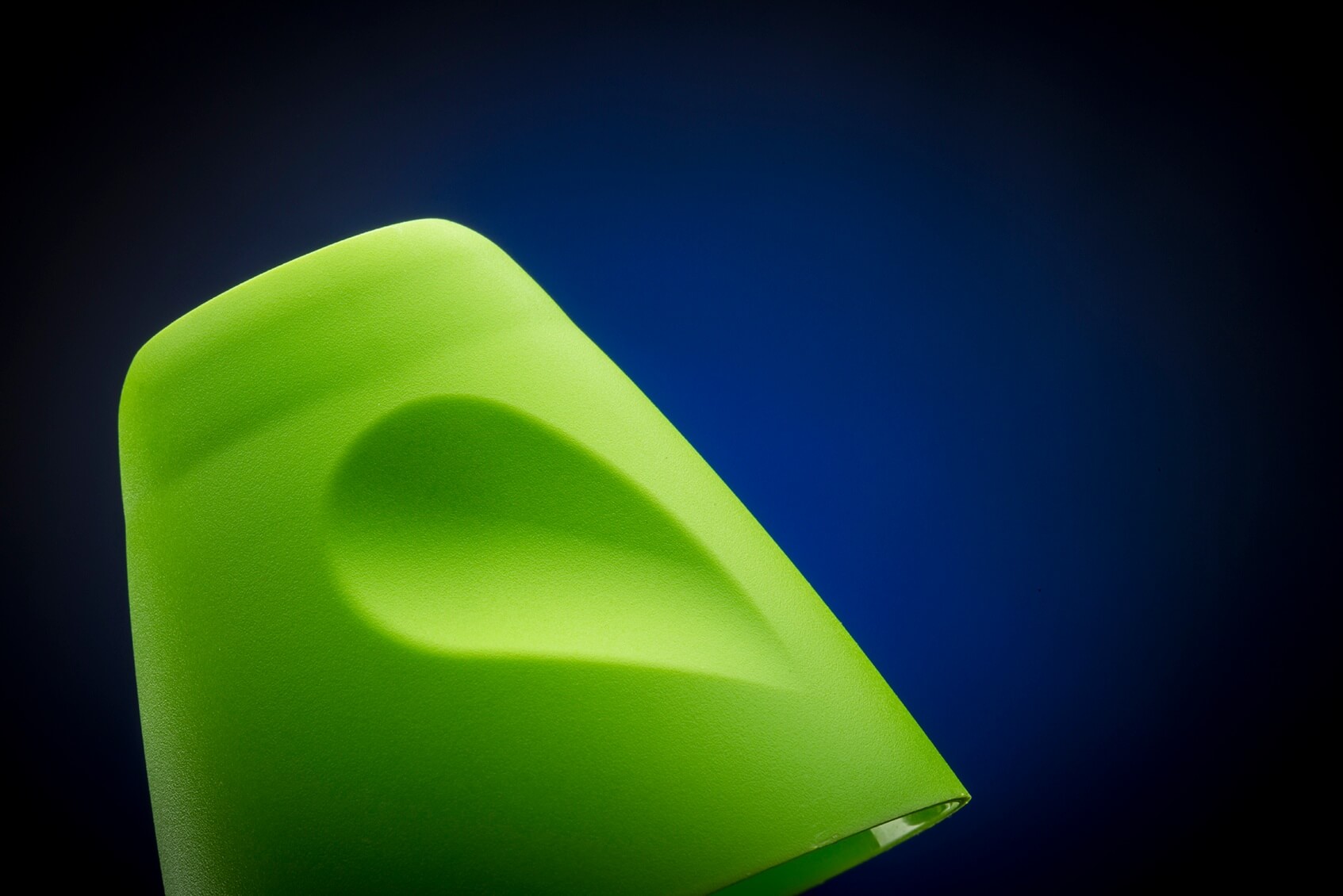Colored plastics see broad usage every day in a vast range of applications and settings, but not many people understand how these hues are created and implemented.With the help ofPenn Color半岛真人赌城, a knowledgeable and experienced local colorant manufacturer who has a longstanding partnership with The Rodon Group, we have gathered information and insights into how the plastic products we know and use every day get their colors.
Plastic Coloring Process
The plastic resins most often used for injection molding include:
- Polypropylene (PP)
- Low-density polyethylene (LDPE)
- Acrylonitrile butadiene styrene (ABS)
- Acetyl (often under the brand name Celcon®)
- High-impact polystyrene (HIPS)
Each of these resins has various benefits and drawbacks that determine their suitability for various applications—see this infographicfor more information.Adding color to resins requires various coloring systems, each of which offers its own unique properties, benefits, and drawbacks:
- Compounding:Resins are pre-mixed with pigment and ready to use for molding.
- Masterbatching:Pigments are pre-mixed with resin, but they must first be extruded with uncolored plastic or rubber before use.
- Solvent coloring:Pigment is dissolved in a solvent that is sprayed onto uncolored pellets for injection molding.
- Dry-pigment mixing:Powdered color is directly mixed with plastic pellets for injection molding.

To add color to ourcustom injection-molded products, we purchase plastic pellets of natural polymers such as nylon, low-density polyethylene, acrylonitrile butadiene styrene, or polypropylene.Working with Penn Color and other partners, our color concentrates are blended together using a calibrated dosing unit that adds the pigment the resin requires.These dosing units typically dispense colorant at a range of 1% to 4%, -and they are calibrated for extremely precise dispersal.
The Color Matching Process
To pinpoint the desired colored plastic product or part, a color matching process must be completed, which allows engineers to develop a specific color concentrate for a particular application.Typically, a chip, plaque, or Pantone number provides an approximate idea of existing hue to be matched, and information regarding the specific polymer being used helps determine the appropriate formulation for the concentrate.

For each polymer being color-matched, various factors must be taken into consideration, including melt processing temperatures and viscosity.For example, a laboratory may use formulation guidelines to determine what pigment systems, stabilizers, carrier resins, or any additional additive types would be suitable for the specific product and application at hand, as prescribed on the color match request form.
It's also important to keep in mind that colors will look different depending on the gloss of the polymer, appearance, and filler content—a color used in a nylon part is going to look different from the same color in acrylic, for example.Environmental conditions, chemical resistance, and FDA suitability must all be taken into consideration as well when preparing a color match.
Penn Color can color match in any polymer system, some of which include:
- Nylon
- Polypropylene
- Polyethylene
- Polyesters
- PVC
- Acrylics
A color spectrophotometer is used to measure, store, and formulate colors using a computer color matching system.All colors and polymer systems are stored electronically in the color matching system—as well as in chip files or plaques produced in the laboratory during the color matching process.

Application Examples
Successful plastic coloring depends on close attention to minute details and adherence to unique application-specific requirements.半岛真人赌城For instance, Rodon has completed injection molding processes for:
•Small window components.To ensure optimal functionality, such components require colorants that are resistant to fading as well as heat buildup.
•Automotive components.Components used in automobiles require an exact color match with other parts, so our team must be sure that colors match precisely under all types of lighting conditions.In comparison with very similar hues—colored molding or door handles must be an exact match with painted metal doors, for instance.
•Sanitary applications.For any items that will come into contact with food or any plastics used in hygiene-critical medical applications or toys, strict regulatory requirements must be met to ensure optimal end-user safety.
Impact of Colorants on Plastic Characteristics
When determining how to color plastic, there are multiple factors to consider.These include:
•Compatibility.The colorant and polymer must be chemically compatible.The chemicals in some colorants interact with those in some plastics.This can alter polymer properties such as temperature tolerances, flexibility, or impact resistance.The ratio of color to plastic is usually somewhere in the vein of 1:100 up to 5:100.
•Pigment levels.As the volume of pigment injection increases, the color's effect on the plastic grows stronger.Too much pigment may impact the properties of the plastic or the depth of the coloring.
•Color properties.Each color possesses varying chemical properties which may interact with the plastic of the part in different ways.When fabricating the same component in multiple colors, it's possible that parts in different colors may not have the same dimensions.It's especially important to pay attention to these variances when product tolerances are tight.
•Coloring method:Much like the pigment itself, the technique used for coloring may also influence the mechanical properties of the plastic material.Ensuring compatibility between the process and the material choice will help to avoid production issues.
•Certifications:Plastics used for food, medical applications, and toys are subject to special regulatory requirements.If a color alters the properties of a component being used in these industries, the product could be denied critical safety certifications.
半岛平台下截链接
半岛真人赌城Specializing in high volume injection molding orders of more than one million pieces, The Rodon Group is proud to offer processes for a wide range of industries and applications — including medical, food and beverage, and window and door.半岛平台下截链接To learn more about our turnkey injection molding and thermoforming capabilities, check out ourcomprehensive eBooktoday.
Founded in 1964, Penn Color develops and manufactures a diverse product line of thermoplastic color and additive masterbatches, in addition to liquid dispersions for various ink, coating, and thermoplastic applications.Visit their websitefor more information on colorants.









Comments